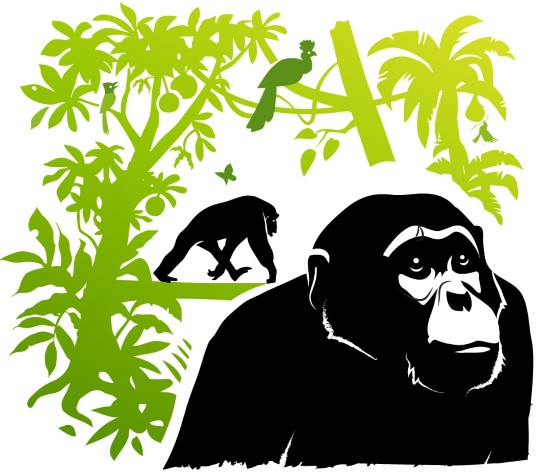Kibale Chimpanzee Project
Research, conservation, and education
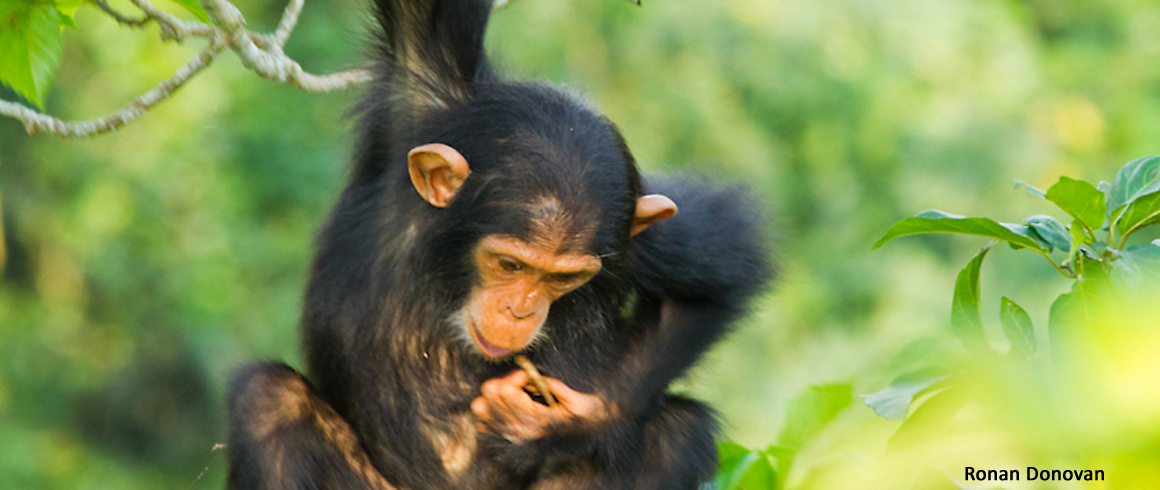
Older chimpanzees accentuate the positive
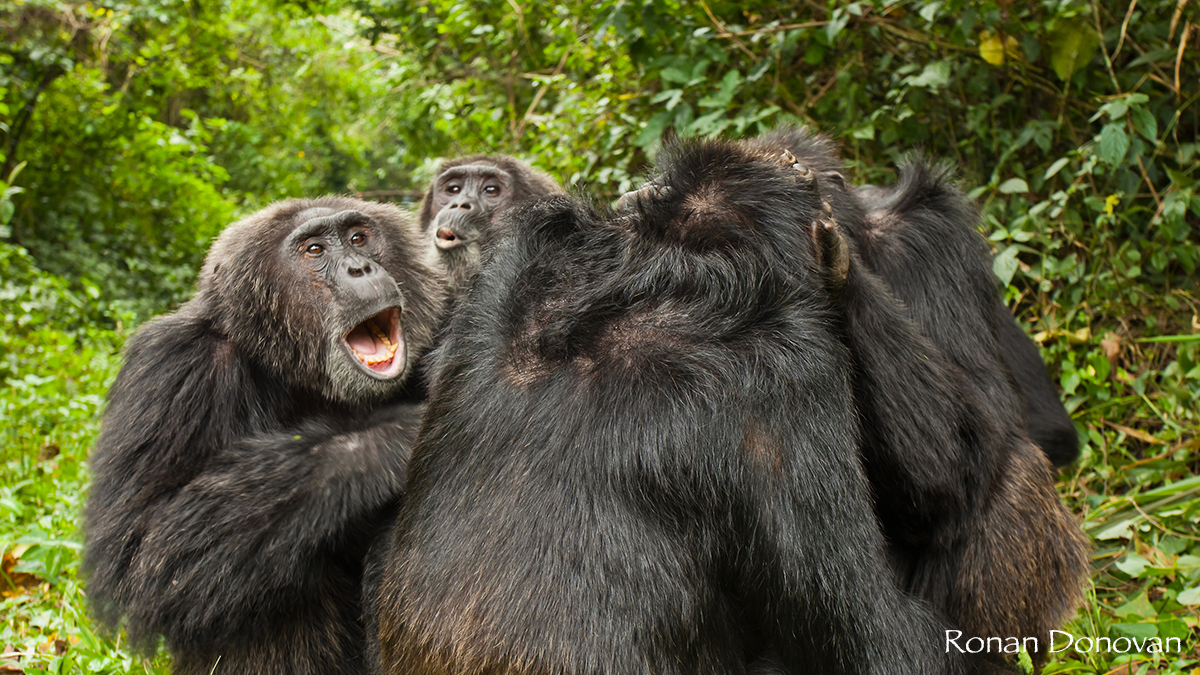
A new KCP study published in Science shows that wild chimpanzees share social aging patterns with humans, by prioritizing strong social bonds and interacting with others in increasingly positive ways as they get older.
KCP researchers led by Dr. Alex Rosati and Dr. Zarin Machanda leveraged our exceptional long-term dataset to test socioemotional selectivity theory – an influential idea in psychology aimed at explaining why humans show changes in social interactions during aging. Socioemotional selectivity theory proposes that people shift their social behavior from a focus on forming new friends in young adulthood, to maintaining a smaller network of close, fulfilling relationships in old age. The proposal is that this shift happens because of our human ability to monitor our own personal time horizons—how much time we have left in our life—which causes us to prioritize emotionally-fulfilling relationships when time is perceived to be running out.
Using 20 years of behavioral data, researchers found that chimpanzees, like humans, increasingly prioritized mutual and equitable friendships with others that invested in them as they got older. Younger adults, in contrast, were more likely to form lopsided relationships where their partner did not reciprocate. Older chimpanzees also were more likely to be seen alone, but tended to socialize more with important partners when they did join the group. Finally, they showed a positivity bias in their overall behavior: reducing their aggressive behavior while maintaining levels of affiliative grooming.
Taken together, these results show that chimpanzees share these special social aging patterns with humans, even though they do not have the same rich future time perspective and knowledge of their own mortality that we have. This is the first demonstration that a nonhuman shares these characteristics with us. The shared pattern between chimpanzees and humans could represent an adaptive response where older adults focus on important social relationships that provide benefits, and avoid interactions that have negative consequences as they lose competitive fighting ability. This research highlights how long-term behavioral datasets from wild animals like chimpanzees can help us understand and promote healthy aging in humans.
Sex differences in early aggressive experience at Kanyawara
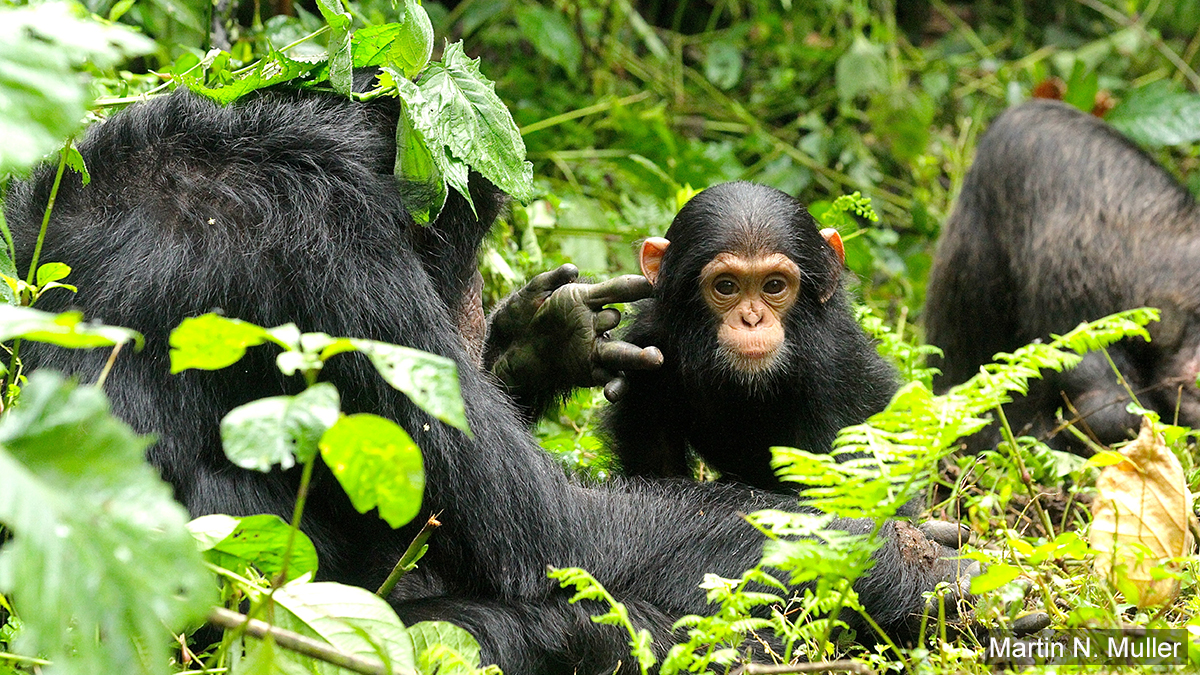
Experts and parents alike have long debated whether human boys are more physically aggressive than girls because of nature or nurture. Long-term KCP research on young chimpanzees just published in PNAS indicates that increased physical aggression among boys and men may have deep evolutionary and developmental roots.
For humans, one argument is that boys and girls behave differently due to gender socialization. Even though violence is generally discouraged by parents and other role models, boys’ physical aggression is sometimes deemed more acceptable than girls’. Consequently, boys grow up to be more physically aggressive as men.
However, the existence of similar sex differences in aggression in other species, including our closest relatives, suggests that shared evolutionary history and shared developmental processes might also shape these patterns. Previous work by KCP researchers has documented large differences in male and female chimpanzees’ physical aggression. Not surprisingly, aggression is most frequent among adult and adolescent males as they jockey for position in the dominance hierarchy. Males also use aggression to directly contest mating opportunities. Thus, practicing physical aggression and learning how to compete during the juvenile period is likely particularly important for young male chimpanzees.
As part of her dissertation work at University of New Mexico, lead author Kris Sabbi aimed to find out how early experience might shape this sex difference. Were developing male chimpanzees more likely than females to receive aggression from, or to witness aggression among, other group members? And, if so, was this just because they were males, or was there was some aspect of males’ early social lives that put them at greater risk of receiving aggression?
To answer these questions, Sabbi followed young Kanyawara chimpanzees in Kibale National Park, Uganda, over three years. She recorded their social interactions in intricate detail, from whom they traveled and played with, to how far they moved from their mothers. Then she combined her data on social experience with long-term aggression records from KCP to test these ideas.
Young male chimpanzees did, in fact, experience higher rates of aggression from other group members during development. However, this was not a consequence of their spending more time with adult males or being more independent from mothers – these things did not differ by sex in young Kanyawara chimpanzees. Instead, the strongest predictor of how much aggression young chimpanzees received was the amount of aggression that they themselves displayed, regardless of whether they were female or male.
In other words, when male and female chimpanzees of the same age used aggression at the same rate, they received similar amounts of aggression. But young males were generally more aggressive than young females, so males received more aggression overall. The ultimate source of this particular sex difference in social experience is thus found in an early-emerging sex difference in the use of physical aggression.These findings highlight the fact that infants and juveniles actively shape their social experiences, rather than passively receiving socialization, and call for a deeper look into the ways that experience may interact with other aspects of development, like hormonal profiles, to shape individual differences in adult behavior.
Happy low, lie down!
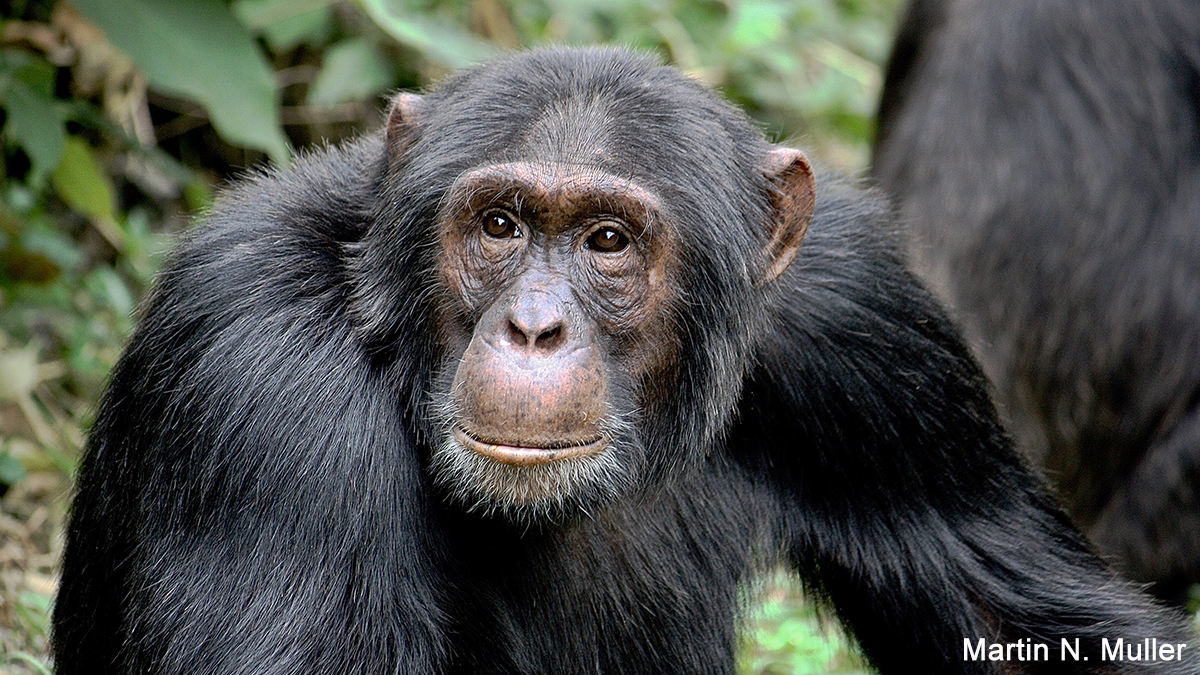
High-ranking animals typically enjoy preferential access to important resources, such as food, water, safe foraging and sleeping sites, and social support. Consequently, high status is normally expected to have positive effects on health and longevity. However, growing evidence suggests that, across vertebrates, such effects are more common among females. High-ranking males often invest heavily in aggressive competition, incurring a range of costs. In a new study, just published in Hormones and Behavior, a team led by Martin Muller looked at glucocorticoid (GC) measures in >8000 urine samples collected from 20 adult male chimpanzees over 20 yrs. Cumulative exposure to GCs is often used as a measure of wear and tear on an organism, and is negatively associated with survival in long-lived species. In Kanyawara males, both instability in the dominance hierarchy and competition over estrous females increased GC production. However, high-ranking males had elevated GCs regardless of hierarchy stability or the presence of estrous females. Involvement in aggression was the key mechanism linking high rank with GC production. These results show that investment in male-male competition increases cumulative exposure to GCs in chimpanzees, suggesting a long-term tradeoff with health that may constrain the ability to maintain high status across the life course. They also suggest a broader sex difference in the effects of status striving and mating effort on health that deserves further attention.
Strontium isotopes track sex-biased dispersal in Kibale

Stable isotopes have been useful for reconstructing diets and habitats of fossil species, but aspects of socioecology, such as group composition, have remained elusive. In a recent Royal Society Open Science publication, Marian Hamilton and Sherry Nelson explore the use of strontium isotopes to detect male and female dispersal patterns using KCP’s primate skeletal collections. Strontium isotope ratios vary across different bedrocks. Spatial differences are incorporated into plants growing above those rocks, and then into the animals that feed on those plants. Consequently, strontium ratios in skeletal tissues that develop at different times in the life cycle have the potential to trace an animal’s movements from childhood to adulthood. Kibale National Park proved to be an ideal location for this study because bedrocks, and therefore strontium, varied throughout possible migration routes within and between the primate communities of Kanyawara, Ngogo, Sebitole, and Kanyanchu. KCP’s skeletal collection offered a rare opportunity to develop this method because, unlike typical museum collections, all animals were from the same location, with opportunities to also isotopically sample the habitat itself using transects of plant and water samples. Furthermore, the collections include primates that vary in their group compositions, with species in which males stay in their natal group, and others in which females stay and males migrate. The collection also provided opportunities to explore effects of ranging behavior and life history variables on isotope ratios. Primate species at Kibale vary in day and home range sizes as well as length of the juvenile period, with chimpanzees having more extended development compared to monkeys. Hamilton and Nelson found that by incorporating these ecological and environmental variables into their methods, strontium isotopes effectively reflected group composition. These new methods can now be applied to fossil records, including exploring questions regarding early human ancestors in which group compositions and their ramifications, such as mating systems and social bonds, are unresolved.
A look at the Kibale Snare Removal Project
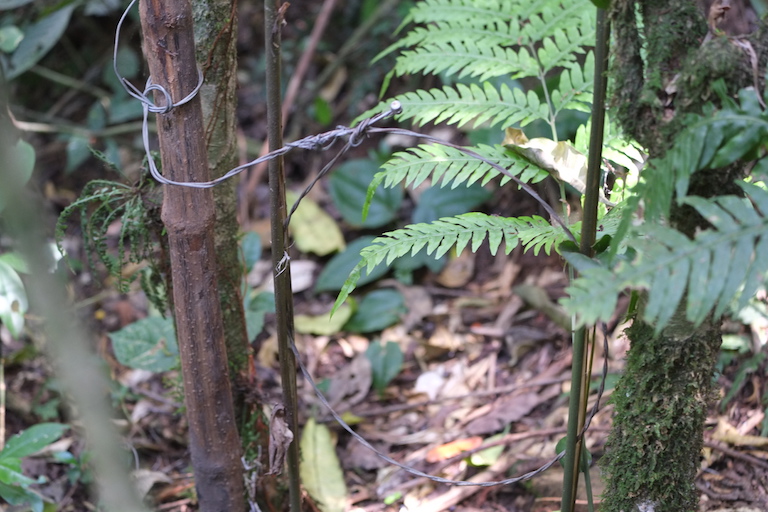
Detailed coverage of KCP’s snare removal program from Mongabay.
Jess Hartel interviewed for ASP

KCP’s Dr. Jessica Hartel discusses the Kibale Snare Removal Program, which protects chimpanzees in Uganda while engaging with local communities in conservation and education. Interview for Welfare “Hot Topics” – the American Society of Primatologists:
https://asp.org/2020/08/20/kibale-snare-removal-program/
